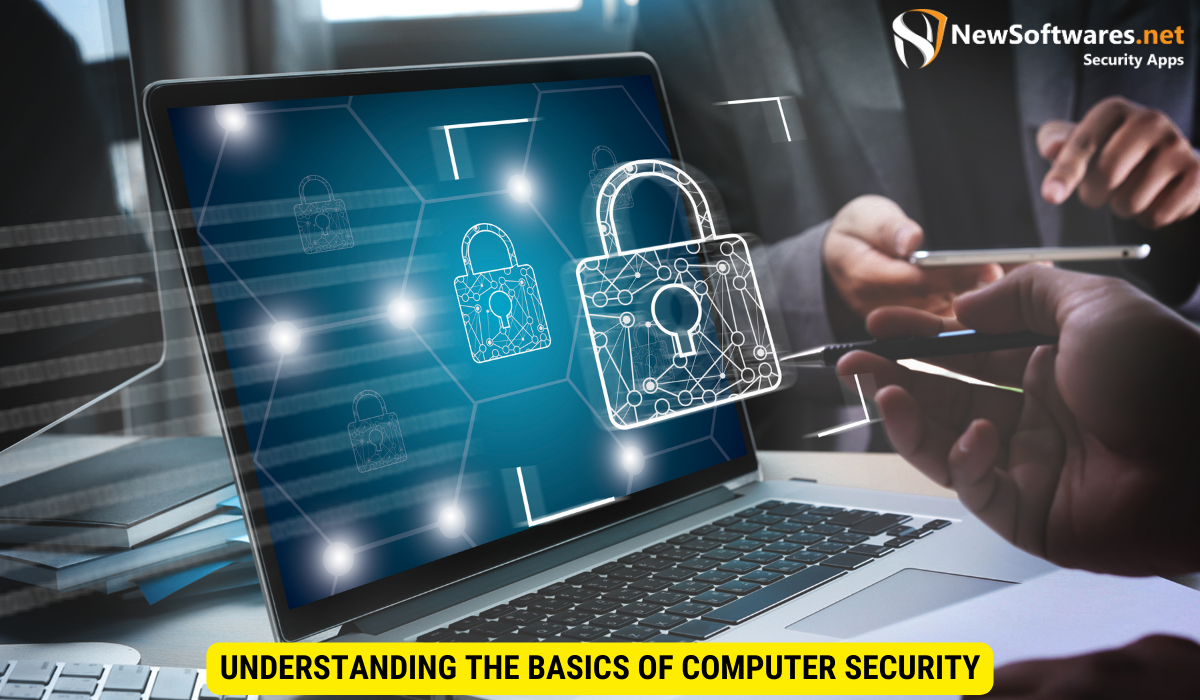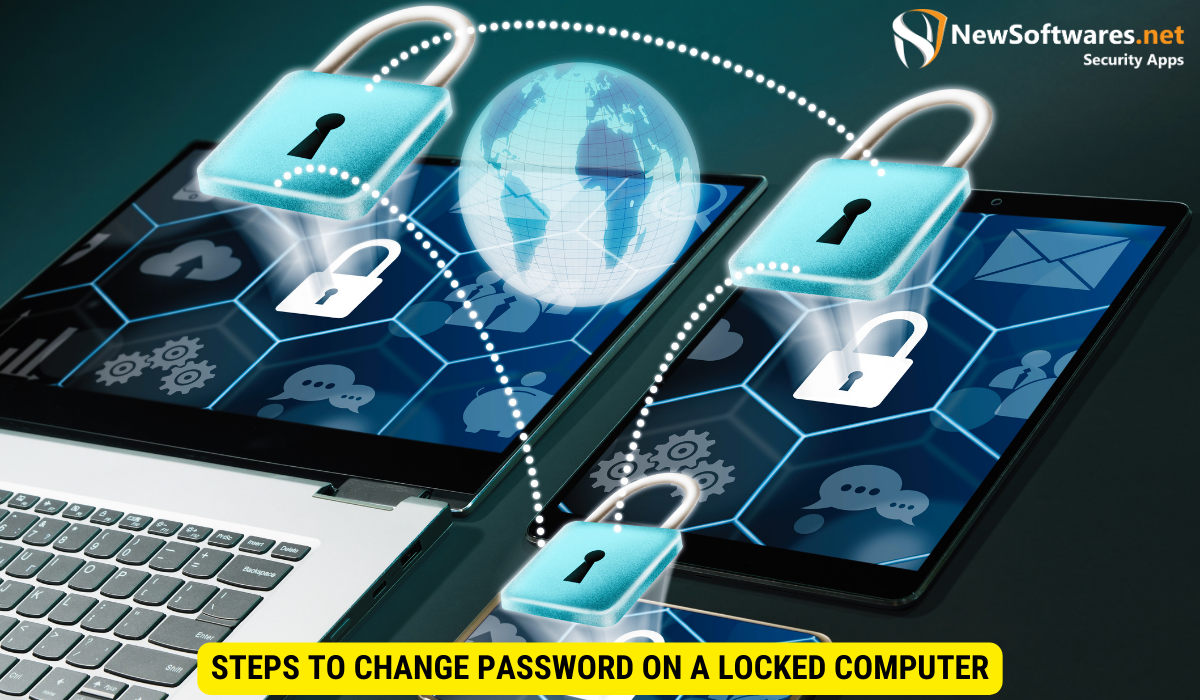Changing the password on a locked computer is achievable by following specific procedures tailored to your operating system. This task involves preparatory measures, followed by step-by-step processes based on whether you are using Windows or macOS. Troubleshooting common issues and maintaining computer security post-password change are essential for success.
In the era of widespread digital interaction, computer security has become a paramount concern for individuals and organizations alike. One crucial aspect of computer security is password management. However, it is not uncommon to find oneself locked out of a computer due to forgotten or expired passwords. Navigating this barrier can be a daunting task, but fear not, as I will guide you through the process of changing a password on a locked computer.
Understanding the Basics of Computer Security

In order to appreciate the importance of password change on a locked computer, it is essential to understand the basics of computer security. Computer security refers to the protective measures taken to safeguard computer systems and data from unauthorized access.
Computer security encompasses a wide range of practices, technologies, and techniques designed to protect computers, networks, and data from unauthorized access, use, or damage. It involves implementing measures such as firewalls, antivirus software, encryption, and access controls to ensure the confidentiality, integrity, and availability of information.
The Importance of Passwords in Computer Security
Passwords serve as the initial line of defense against unauthorized access to a computer system. They provide a level of security by ensuring that only authorized individuals can gain access to sensitive information or perform certain actions on a computer.
It is crucial to create strong and unique passwords that are difficult to guess or crack. A strong password typically includes a combination of letters, numbers, and special characters and is at least 12 characters long. Regularly changing passwords and avoiding the reuse of passwords across multiple accounts are also important practices to enhance security.
Common Reasons for Locked Computers
There are several reasons why a computer might become locked. These include forgotten or expired passwords, system updates, malware or virus attacks, and administrative lockouts.
Forgotten passwords are a common issue faced by computer users, especially when they have multiple accounts with different login credentials. System updates can sometimes lead to unexpected changes in settings or configurations, resulting in login issues. Malware or virus attacks can also compromise the security of a computer system, leading to unauthorized access or system lockdown. In some cases, administrative lockouts may occur due to policy violations or security breaches, restricting user access to the system.
Steps to Change Password on a Locked Computer

Changing a password on a locked computer may seem like an insurmountable task, but by following a few simple steps, you can regain access to your system.
Preparatory Measures Before Changing Password
Before you embark on changing the password on your locked computer, it is important to take some preparatory measures. These measures include gathering any necessary documents or information, ensuring you have the necessary permissions, and having a backup plan in case any issues arise during the process.
It is also advisable to inform any relevant parties about the password change to avoid any confusion or disruptions to workflow. Additionally, creating a secure and memorable new password is crucial to maintaining the security of your system.
Detailed Process of Password Change
The process of changing a password on a locked computer may vary depending on the operating system being used. In the following sections, we will explore the steps for changing passwords on both Windows and macOS systems.
Changing Password on Windows:
For Windows users, changing a password on a locked computer can be done by accessing the Windows Recovery Environment or using a password reset disk. These methods typically involve entering the BIOS settings or using the Command Prompt to reset the password.
Changing Password on macOS:
Mac users can change a password on a locked computer by using the Password Reset Utility. This utility allows users to reset their passwords by entering their Apple ID credentials or using the FileVault recovery key.
Dealing with Different Operating Systems
When it comes to changing passwords on locked computers, the process can differ based on the operating system being used. Let’s explore the steps for changing passwords on both Windows and macOS systems.
Understanding the nuances of different operating systems is crucial when it comes to troubleshooting and resolving issues related to password changes on locked computers. Each system has its own set of protocols and methods for resetting passwords, requiring users to adapt their approach accordingly.
Changing Password on Windows
On Windows systems, changing a password on a locked computer can be accomplished by booting into Safe Mode and accessing the command prompt. From there, you can enter specific commands to reset the password and regain access to your system.
Windows operating systems offer a variety of tools and utilities that can aid in password recovery and reset processes. By leveraging Safe Mode and the command prompt, users can navigate through the system files and make the necessary changes to regain control of their locked computer.
Changing Password on MacOS
Mac users can change their password on a locked computer by utilizing the macOS Recovery feature. This feature allows users to access the Terminal and enter commands that will enable them to reset their password and regain access to their system.
macOS Recovery provides Mac users with a comprehensive set of tools for troubleshooting and resolving password-related issues. By accessing the Terminal through the recovery mode, users can execute commands that facilitate the password reset process, ensuring seamless access to their locked system.
Troubleshooting Common Issues
During the process of changing a password on a locked computer, you may encounter certain issues. Let’s explore some common problems and how to address them.
Addressing Failed Password Change Attempts
If your attempts to change the password on a locked computer are unsuccessful, there could be various reasons. These reasons may include hardware or software issues, incorrect procedures, or system compatibility problems. Troubleshooting these issues can involve checking hardware connections, verifying software compatibility, or seeking professional assistance if necessary.
What to Do When You Forget Your New Password
Forgetting the new password after successfully changing it on a locked computer can be frustrating. In such cases, there are a few steps you can take to regain access, such as utilizing password recovery tools, seeking assistance from the computer manufacturer, or accessing administrative accounts.
Maintaining Computer Security Post Password Change
Once you have successfully changed the password on your locked computer, it is important to implement ongoing computer security practices to ensure the continued protection of your system and data.
Best Practices for Password Management
To maintain computer security, it is crucial to follow best practices for password management. This includes using strong and unique passwords, regularly updating them, and avoiding common password pitfalls such as using personal information or easily guessable phrases.
Regular Updates and Computer Security Maintenance
In addition to password management, regular system updates and computer security maintenance are vital to keeping your computer safe. This involves installing the latest software updates, utilizing reputable antivirus software, and practicing safe browsing habits.
Key takeaways
- Computer security relies on password management as a fundamental aspect of protection.
- A locked computer can be caused by various factors, such as forgotten or expired passwords.
- Changing a password on a locked computer involves preparatory measures, followed by specific steps based on the operating system.
- Troubleshooting common issues, such as failed password change attempts, is essential for success.
- Maintaining computer security post password change involves password best practices and regular system updates.
FAQs
1. Can I change the password on a locked computer without professional help?
Yes, changing the password on a locked computer can be done without professional help by following specific procedures tailored to your operating system. However, if you encounter difficulties or are unsure of the process, seeking professional assistance can be beneficial.
2. What should I do if I forget my password after successfully changing it?
If you forget your new password after changing it on a locked computer, there are a few steps you can take. These include utilizing password recovery tools, seeking assistance from the computer manufacturer, or accessing administrative accounts.
3. How often should I update my passwords?
To maintain optimal security, it is recommended to update your passwords regularly. Experts suggest changing passwords every three to six months, or immediately if you suspect any compromise.
4. Are there any alternatives to changing the password on a locked computer?
While changing the password is the most common solution for regaining access to a locked computer, there may be alternative methods depending on the operating system and specific circumstances. For example, resetting the computer to factory settings may be an option, but it will result in the loss of all data.
5. Can I prevent my computer from being locked in the first place?
While it may not be possible to completely prevent a computer from being locked, there are measures you can take to minimize the risk. These include using strong passwords, implementing multi-factor authentication, keeping your system updated, and utilizing reputable antivirus software.
Conclusion
Regaining access to a locked computer by changing the password is a task that requires patience, knowledge, and following specific procedures. By understanding the basics of computer security, preparing adequately, and troubleshooting any issues that arise, you can successfully change the password on a locked computer. Implementing ongoing computer security practices ensures the continued protection of your system and data.
